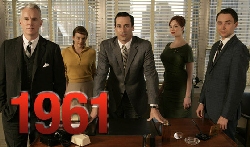- The causes are right in front of us, but is anyone paying attention?
Click for AUDIO VERSION.
To use this segment in a Radio broadcast or Podcast, send TIM a request.
 Not long ago, I wrote about "Our Changing Values" whereby I noted our shifting attitudes towards what is considered right and wrong. This was based on Gallup's May 2017 report noting an accelerated trend toward liberal positions. The purpose of my column was to have people take notice of an emerging problem. Unfortunately, most Americans have not noticed, or are simply apathetic about the problem and do not understand what is causing it. Perhaps I can help.
Not long ago, I wrote about "Our Changing Values" whereby I noted our shifting attitudes towards what is considered right and wrong. This was based on Gallup's May 2017 report noting an accelerated trend toward liberal positions. The purpose of my column was to have people take notice of an emerging problem. Unfortunately, most Americans have not noticed, or are simply apathetic about the problem and do not understand what is causing it. Perhaps I can help.
The cause for our changing attitudes does not reside in a single area, but rather a combination of different elements, such as technology addiction, our drug culture, parental abdication, Hollywood values, a decline in church influence, and an influx of immigrants. Let's consider each separately:
First, not long ago it was discovered technology possesses the same addictive powers as drugs. In my column on "Proof of Technology Addiction," I reported on the work of Dr. Nicholas Kardaras, who contends technology raises dopamine, the neurotransmitter associated with rewards, as does sex and drugs. He goes on to say, "Recent brain imaging research is showing that they affect the brain’s frontal cortex – which controls executive functioning, including impulse control – in exactly the same way that cocaine does."
This addiction to technology, such as smart phones, tablets and pc's, is affecting our social skills, including our ability to converse orally or through the printed word. When we become more fixated on technology as opposed to humans, it denotes a change in our perceptions, values and priorities.
Second, we are plagued by a fifty year drug culture that is becoming more invasive in our lives. News of a rising opioid epidemic is common today and shows no sign of abating. Heroin is on the rise, as is marijuana where states are starting to embrace it for both medicinal and recreational purposes. Like technology, when we become addicted to drugs, our values and priorities change. Instead of working harder and leading a worthy life, we become consumed with getting high as an escape outlet.
Third, parental abdication - unlike yesteryear, it is now common for both parents to be fully employed. This means an adult is not home to tend to the needs of their offspring. It also means parents are tired and willing to have others look after their children, such as teachers and coaches, people charged with teaching various skills, but not morality. Parents also generously provide youth with computer games to occupy their time, but such games may encourage violence and other vices. On the plus side, families still enjoy assembling around the dinner table if it is nothing more than once each week. Interestingly, a 2016 Harris Poll claims 4 in 10 families eat their meals in front of the TV, not the dinner table, another sign of deteriorating social skills and a gravitational pull by technology. This abdication by parents to teach morality to their children is perhaps the most disturbing element here.
Fourth, the values of Hollywood greatly influence youth. Sexual remarks and innuendo often is emulated, and massive amounts of violence may also lead to unhealthy decisions. The lessons of greed, lust, selfishness, theft, deceit, etc. are all graphically displayed, but not necessarily in a positive manner.
Fifth, declines in the belief of God and church attendance - both Gallup and Harris have produced polls showing the belief in a Supreme Being is slowly declining. Further, attendance at religious institutions is also declining; "65 percent of churches are declining or plateaued."
Even more disturbing is fewer younger people are going to church which, of course, affects membership. "For every new church that opens, four close." For many years, churches and temples preached the lessons of right and wrong, but with fewer attendees, these lessons now go unheeded. It has become glaringly obvious to churches they must change in order to survive, be it the venue or how to disseminate their message.
And finally, sixth, we are faced with an enormous influx of immigrants, both legal and illegal. According to a recent report, "U.S. Immigrant Population Hit Record 43.7 Million in 2016," representing an increase of half a million since 2015, 3.8 million since 2010, and 12.6 million since 2000. And the figure of 437 million immigrants will likely double by 2060 if left unchecked.
America has always been a melting pot of immigrants, but those coming to our shores have adapted to the American way of life, not the other way around. It is true, each ethnic group brings their own unique peculiarities to the table, but it is necessary for them to adapt to the language, customs and laws of their new country as several generations have done so before them. However, if they refuse to adapt, an unhealthy adversarial relationship is created which affects our social climate, such as offering different rules of right and wrong.
With the decline of the family unit and organized religion, there are fewer and fewer outlets to teach moral values, such as the Golden Rule ("Do unto others as you would have others do unto you"), and the virtues of such things as the Ten Commandments. This opens the door to learn new values as proposed by Hollywood, immigrants, and driven home through technology.
Now that we have identified the problem, and noted its causes, the next question should be rather obvious; What can be done about them? As long as the public remains apathetic to the problem, and refuses to discuss it, it will certainly not get better on its own. If you would like me to speak on this subject at your house of worship or nonprofit group, please do not hesitate to contact me.
Keep the Faith!
Note: All trademarks both marked and unmarked belong to their respective companies.
 Tim Bryce is a writer and the Managing Director of M&JB Investment Company (M&JB) of Palm Harbor, Florida and has over 40 years of experience in the management consulting field. He can be reached at timb001@phmainstreet.com
Tim Bryce is a writer and the Managing Director of M&JB Investment Company (M&JB) of Palm Harbor, Florida and has over 40 years of experience in the management consulting field. He can be reached at timb001@phmainstreet.com
For Tim's columns, see: timbryce.com
Like the article? TELL A FRIEND.
Copyright © 2017 by Tim Bryce. All rights reserved.
Also read Tim's columns in the THE HUFFINGTON POST
NEXT UP: THINNING THE HERD - Are accidents truly accidental or a matter of “natural selection”?
LAST TIME: HOW WELL ARE WE PREPARING THE NEXT GENERATION? - Not as well as we might think.
Listen to Tim on WZIG-FM (104.1) in Palm Harbor,FL; KIT-AM (1280) in Yakima, Washington "The Morning News" with hosts Dave Ettl & Lance Tormey (weekdays. 6:00-9:00am Pacific). Or tune-in to Tim's channel on YouTube. Click for TIM'S LIBRARY OF AUDIO CLIPS.
 Today we have got some very bright and ambitious young people joining the work force but they are coming at a very different time in the business world. Thanks to technology, we now live and work in a much faster paced society than what I joined just three short decades ago. It is also a much more competitive environment due to changing economic conditions. True, the Greatest Generation has basically moved along, but the Baby Boomers are still firmly in place and are not inclined to retire any time soon. This means the class of 2012 will be competing not only with people in their 20's, 30's and 40's, but also with people in their 50's and 60's who cannot afford to retire.
Today we have got some very bright and ambitious young people joining the work force but they are coming at a very different time in the business world. Thanks to technology, we now live and work in a much faster paced society than what I joined just three short decades ago. It is also a much more competitive environment due to changing economic conditions. True, the Greatest Generation has basically moved along, but the Baby Boomers are still firmly in place and are not inclined to retire any time soon. This means the class of 2012 will be competing not only with people in their 20's, 30's and 40's, but also with people in their 50's and 60's who cannot afford to retire. Sushi has been a favorite of mine since I began visiting Japan back in the 1970's. When I first tasted it, I was somewhat surprised by the hot wasabe mustard carefully hidden between the fish and the rice cake, but as I am somewhat of an aficionado of hot and spicey food, I adapted to it quickly. For the uninitiated, sashimi is simply raw fish, but sushi consists of a small rice cake, usually the size of a pinky finger, topped with green wasabe mustard and sashimi. Sushi comes in as many varieties as there are fish in the sea, and I've tried just about everything from eels and fish heads to Dancing Shrimp. "Dancing Shrimp?" you might ask. Actually it's an interesting story.
Sushi has been a favorite of mine since I began visiting Japan back in the 1970's. When I first tasted it, I was somewhat surprised by the hot wasabe mustard carefully hidden between the fish and the rice cake, but as I am somewhat of an aficionado of hot and spicey food, I adapted to it quickly. For the uninitiated, sashimi is simply raw fish, but sushi consists of a small rice cake, usually the size of a pinky finger, topped with green wasabe mustard and sashimi. Sushi comes in as many varieties as there are fish in the sea, and I've tried just about everything from eels and fish heads to Dancing Shrimp. "Dancing Shrimp?" you might ask. Actually it's an interesting story. I went to the local mall recently to look for a gift. It has probably been over ten years since I last visited a mall as I have learned to find merchandise at specialty stores and on the Internet. I generally do not do well with crowds of unthinking clods at the mall. Maybe it is because I suffer from a claustrophobic image of being entrapped by gangs of carnies. Whatever it is, I discovered nothing has really changed in this regard.
I went to the local mall recently to look for a gift. It has probably been over ten years since I last visited a mall as I have learned to find merchandise at specialty stores and on the Internet. I generally do not do well with crowds of unthinking clods at the mall. Maybe it is because I suffer from a claustrophobic image of being entrapped by gangs of carnies. Whatever it is, I discovered nothing has really changed in this regard. Last August, America experienced a total solar eclipse which spanned fourteen states, and was seen as a partial eclipse in most of the rest of the country. The media seized on the phenomenon and dubbed it "The Great American Eclipse." I heard commentators say this was the greatest event of its kind in American history. As a result, millions of Americans got caught up in the event and paid good money to wear some cheap sunglasses to watch the eclipse. It was a welcomed diversion from the political woes normally reported on television. However, I couldn't help but wonder what all the hubbub was all about. After all, we have witnessed plenty of eclipses over the years, but this one seemed to capture the fancy of the media.
Last August, America experienced a total solar eclipse which spanned fourteen states, and was seen as a partial eclipse in most of the rest of the country. The media seized on the phenomenon and dubbed it "The Great American Eclipse." I heard commentators say this was the greatest event of its kind in American history. As a result, millions of Americans got caught up in the event and paid good money to wear some cheap sunglasses to watch the eclipse. It was a welcomed diversion from the political woes normally reported on television. However, I couldn't help but wonder what all the hubbub was all about. After all, we have witnessed plenty of eclipses over the years, but this one seemed to capture the fancy of the media. Although vendors will generally work overtime to satisfy the wants and needs of a customer, sometimes it is more important to maintain one's dignity as opposed to allowing the customer to walk all over you. I have seen many situations in sales and customer service where the client relentlessly pushes for the lowest prices and/or maximum benefits, just to earn brownie points with his management. He is not so much concerned with doing business with a particular vendor as much as he wants to look good in the eyes of his boss.
Although vendors will generally work overtime to satisfy the wants and needs of a customer, sometimes it is more important to maintain one's dignity as opposed to allowing the customer to walk all over you. I have seen many situations in sales and customer service where the client relentlessly pushes for the lowest prices and/or maximum benefits, just to earn brownie points with his management. He is not so much concerned with doing business with a particular vendor as much as he wants to look good in the eyes of his boss. A couple of years ago I created somewhat of a ruckus when I wrote an article on
A couple of years ago I created somewhat of a ruckus when I wrote an article on  The short answer, No. The long answer requires an explanation. First, the president can be impeached for committing "high crimes and misdemeanors." In the case of Richard Nixon in 1974, charges were being prepared for obstruction of justice, but Nixon resigned before he could be impeached. On the other hand, Bill Clinton was impeached in 1998 for perjury and obstruction of justice stemming from the sexual harassment lawsuit filed against him by Paula Jones. He was subsequently acquitted by the Senate. Both were embarrassing affairs, and both were politically motivated.
The short answer, No. The long answer requires an explanation. First, the president can be impeached for committing "high crimes and misdemeanors." In the case of Richard Nixon in 1974, charges were being prepared for obstruction of justice, but Nixon resigned before he could be impeached. On the other hand, Bill Clinton was impeached in 1998 for perjury and obstruction of justice stemming from the sexual harassment lawsuit filed against him by Paula Jones. He was subsequently acquitted by the Senate. Both were embarrassing affairs, and both were politically motivated. The original purpose of our company was to develop and market a methodology to walk people step-by-step through the design and development of information systems, from soup-to-nuts. We implemented this as a series of manuals and forms for people to reference during the process. Actually, there were three manuals in the set which were housed in 22-ring binders: a manual to explain the methodology, another to show examples, and a third with training materials and an installation guide. This was done at a time before there were quick copy shops. Based on our artwork, a printer would produce copies of the manuals and forms on an offset press which was returned to us for coallating, punching, and insertion into the binders. This was certainly not a glamorous job, but it had to be done regardless. To implement it, we setup long tables and organized the pages around them. We then began the arduous task of coallating and inserting the paper by encircling those tables for hours. On a good day, we could assemble forty manuals which was considered a respectable pace. Inevitably, we began to experience the effects of monotony and boredom. You couldn't go on autopilot completely during this assembly as you didn't want to make a mistake, but it certainly wasn't complicated either. We did this for several years until we were able to automate our manuals for access via the computer. I cannot honestly say I miss those days, but I appreciate the necessity of the work.
The original purpose of our company was to develop and market a methodology to walk people step-by-step through the design and development of information systems, from soup-to-nuts. We implemented this as a series of manuals and forms for people to reference during the process. Actually, there were three manuals in the set which were housed in 22-ring binders: a manual to explain the methodology, another to show examples, and a third with training materials and an installation guide. This was done at a time before there were quick copy shops. Based on our artwork, a printer would produce copies of the manuals and forms on an offset press which was returned to us for coallating, punching, and insertion into the binders. This was certainly not a glamorous job, but it had to be done regardless. To implement it, we setup long tables and organized the pages around them. We then began the arduous task of coallating and inserting the paper by encircling those tables for hours. On a good day, we could assemble forty manuals which was considered a respectable pace. Inevitably, we began to experience the effects of monotony and boredom. You couldn't go on autopilot completely during this assembly as you didn't want to make a mistake, but it certainly wasn't complicated either. We did this for several years until we were able to automate our manuals for access via the computer. I cannot honestly say I miss those days, but I appreciate the necessity of the work. I have been using a variety of computer word processors over the last thirty years and produced some rather fine looking documents using them, but for some reason I still miss the typewriter. Maybe it's because you can quickly type up an impressive looking envelope or fill out a form; Yes, many organizations still use paper forms, particularly nonprofits. The look and feel of a business letter seems somehow more impressive when prepared on a typewriter, more professional and authoritative if you will.
I have been using a variety of computer word processors over the last thirty years and produced some rather fine looking documents using them, but for some reason I still miss the typewriter. Maybe it's because you can quickly type up an impressive looking envelope or fill out a form; Yes, many organizations still use paper forms, particularly nonprofits. The look and feel of a business letter seems somehow more impressive when prepared on a typewriter, more professional and authoritative if you will. The premise behind Hitchcock's 1935 movie classic,
The premise behind Hitchcock's 1935 movie classic,  Recently, I was going through some of my father's old papers back when he worked as Product Planning Manager at Remington Rand in New York City, the makers of the UNIVAC computer at the time. In particular, I came across a training manual entitled, "Creative Management Development" from 1961. Evidently it was used as part of a training class to groom managers for the company. Being curious, I picked through the manual carefully to see the perspective of management back then.
Recently, I was going through some of my father's old papers back when he worked as Product Planning Manager at Remington Rand in New York City, the makers of the UNIVAC computer at the time. In particular, I came across a training manual entitled, "Creative Management Development" from 1961. Evidently it was used as part of a training class to groom managers for the company. Being curious, I picked through the manual carefully to see the perspective of management back then.